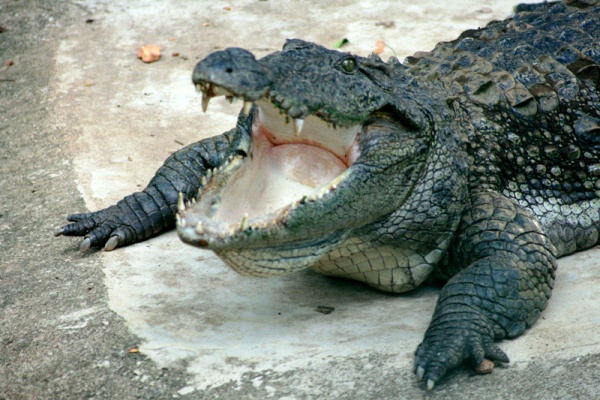Facts About Mugger crocodile
The mugger crocodile, also known as the marsh crocodile or broad-snouted crocodile, is a fascinating freshwater species native to regions spanning from southern Iran to the Indian subcontinent. Unfortunately, it has been listed as Vulnerable on the IUCN Red List since 1982 and is now extinct in Bhutan and Myanmar.
These medium-sized crocodiles typically inhabit lakes, rivers, marshes, and artificial ponds. They excavate burrows for shelter and nesting, with females laying up to 46 eggs during the dry season. Their diet is diverse, including fish, reptiles, birds, and mammals, while juveniles primarily feed on insects.
Mugger crocodiles have a distinctive appearance, characterized by their olive to grey-brown coloration, prominent scutes, and broad snout. Adult females typically measure between 2 and 2.5 meters, whereas males are slightly larger, ranging from 3 to 3.5 meters in length.
These crocodiles can be found in countries such as Iran, Pakistan, Nepal, India, and Sri Lanka. They prefer slow-moving freshwater bodies but have also been known to thrive in man-made reservoirs and irrigation canals. Given the threats they face, such as habitat destruction, human-wildlife conflicts, and poaching, various conservation efforts are in place to protect them.
One of the most interesting behaviors of mugger crocodiles is their use of tools to hunt birds. They play a crucial role in their ecosystem, serving as both predators and prey. Female muggers reach sexual maturity around 6.5 years old, with nesting and hatching occurring between February and June.
While they can be dangerous, fatal attacks on humans are relatively rare compared to those by other crocodile species. Conservation measures include legal protections under Indian wildlife laws and international agreements such as CITES. Additionally, successful captive breeding and release programs have been implemented to help bolster their populations.

 India
India